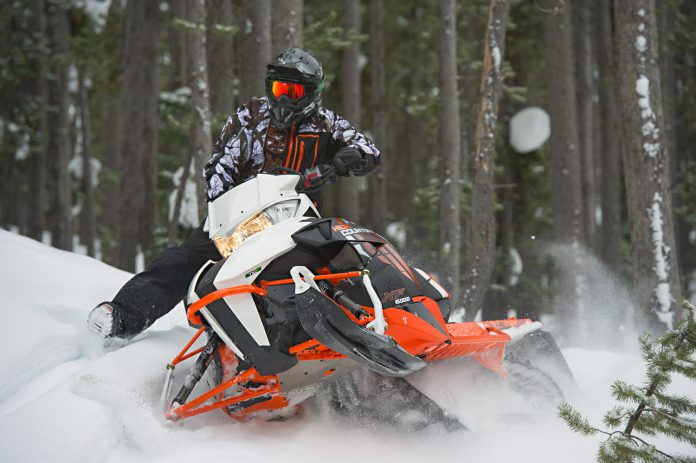You may not have even noticed it! This would be especially true if you haven’t had a chance to ride a new AXYS-based Switchback 144, a 141-inch XF Arctic Cat or any Ski-Doo with an rMotion skidframe.
The big difference is in the way these sleds handle bumps. There’s never been any question about Ski-Doo’s coupled rMotion having incredibly good ride quality but who would have ever thought you could get such a good ride out of a non-coupled suspension like the Switchback or the XF Cat has?
The key element is the length of the skidframe’s front arm. Ski-Doo did it first with rMotion and was quickly followed by Polaris with the RUSH AXYS. By moving the lower mounting position of the front arm back anywhere from four to six inches (depending on the length of the skid) and increasing the length of the arm, it made a dramatic difference in how the back end responded to trail junk.
Arctic Cat reworked the rear arm geometry on its uncoupled and torsion spring-less Float back end used in the XF series and its mountain sleds, two model years ago (2016 models). No one noticed and Cat’s marketing team didn’t make too big a deal of it.
Consumers noticed, however, and those sleds have become much bigger sellers because of the ride change. We tested both the 141 and the 153-inch versions last winter and walked away amazed. Simply no comparison to the past.
We had the same response when we rode the new Switchback Assault. Fantastic ride – and not even coupled.
You’ll get the same results from Yamaha’s XT-X and BT-X series sleds. Apparently Cat and Yamaha engineers worked together on those suspension projects and calibrations are very close to identical.




